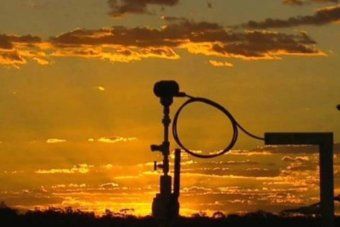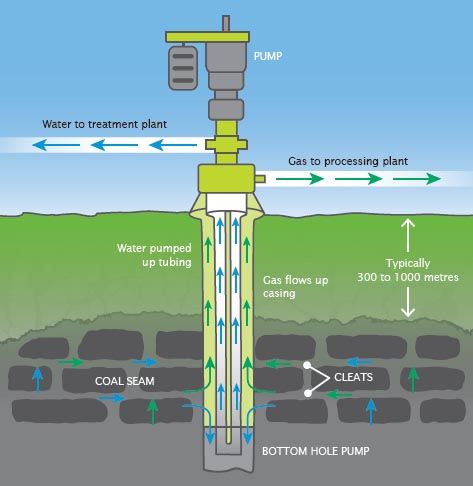Can Coal Seam Gas Water be Safely Reinjected Into the Ground?
Published on by Water Network Research, Official research team of The Water Network in Academic
Water produced when coal seam gas (CSG) is extracted from below ground can be safely re-injected hundreds of metres underground, according to new CSIRO research.
 Water is pumped out of coal seams to access the gas held within them. CSG in the Surat Basin, Australia, produces on average 70 gigalitres of water each year – a seventh of the water held in Sydney Harbour.
Water is pumped out of coal seams to access the gas held within them. CSG in the Surat Basin, Australia, produces on average 70 gigalitres of water each year – a seventh of the water held in Sydney Harbour.
What to do with this water is one of a number of concerns voiced by communities around CSG.
Our research shows that injecting large volumes of treated CSG-produced water at suitable locations within the Surat Basin is unlikely to cause any harm to groundwater quality.
However, to achieve this the water has to be treated adequately to eliminate the risk of polluting groundwater with arsenic – a generally immobile toxic element that occurs naturally in some of the rock formations being considered for re-injection.
Why re-inject CSG water anyway?
In Queensland, the state government’s policy on managing “produced water”, also commonly known as “CSG water”, is to “encourage the beneficial use of CSG water in a way that protects the environment and maximises its productive use as a valuable resource”.
 In many cases the most suitable and socially-accepted option is to treat the water, using reverse osmosis technology, and inject it into deep aquifers. The re-injected water can be used to top-up already stressed aquifers.
In many cases the most suitable and socially-accepted option is to treat the water, using reverse osmosis technology, and inject it into deep aquifers. The re-injected water can be used to top-up already stressed aquifers.
However, looking at similar projects around the world, especially from Florida, has shown that injecting clean water underground can sometimes mobilise naturally occurring contaminants such as arsenic.
When rainwater seeps underground and becomes groundwater it changes its composition. During the subsurface passage that can often take thousands of years the groundwater composition changes slowly to successively take on the characteristics of the rocks.
When water with a non-compatible composition is directly injected into deep aquifers, the injected water will also react with the rocks and therefore change its characteristics to one that is compatible with the new host rock. This occurs through the release of elements from the rocks, a process called mineral dissolution.
In addition, arsenic mobilisation can also occur by a process called desorption, in which case loosely-attached ions are released from mineral surfaces. Both processes may proceed until a new balance or “geochemical equilibrium” is established and both have the potential to mobilise toxic elements such as arsenic.
Source: Australian Mining
Media
Taxonomy
- Oil & Gas
- Groundwater
- Mining Development
- Hydrology
- Groundwater Recharge
- Oil & Gas